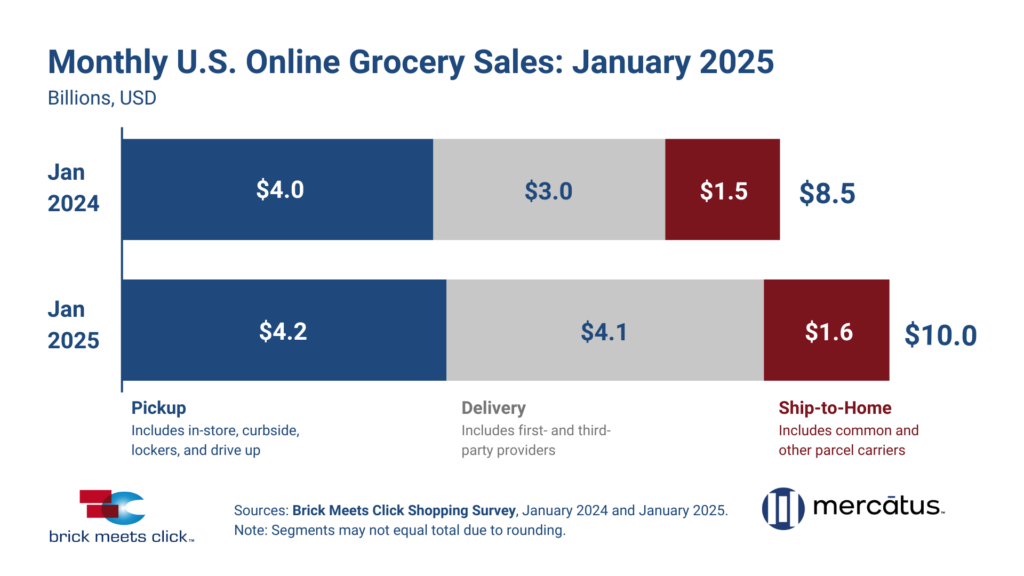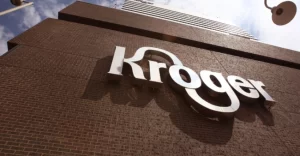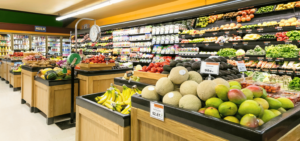Discounted Memberships and Subscriptions Propel Online Grocery Spending Beyond $10 Billion
The U.S. online grocery market recorded $10.0 billion in sales this past January, marking a significant 16.6% increase compared to the same period in 2024.

This growth reflects the sixth consecutive month of online grocery revenues exceeding $9.5 billion.
Much of this momentum has been attributed to extensive promotions on memberships and subscription services, which have driven customer adoption across different ordering methods.
The rising sales encompassed three primary fulfillment methods Delivery, Pickup, and Ship-to-Home with each segment posting gains versus last year.
Delivery generated the largest year-over-year increase, surging about 37% to reach $4.1 billion for the month, fueled by expanded promotional discounts for memberships that have been in place since mid-2024.
This spike was accompanied by remarkable growth in the monthly active user base, more frequent orders, and a slight uptick in average order values.
By the end of January, Delivery accounted for 41% of all eGrocery sales, gaining 610 basis points over the previous year.

“It’s important to call out that much of Delivery’s explosive growth is driven by Mass and specifically Walmart. The ongoing waves of promotional tactics are having the intended positive impact on frequency and spend, and they are also increasing retention and share of wallet, which will make growth for their rivals more challenging going forward.”
David Bishop, partner at Brick Meets Click
While Pickup maintained a larger dollar volume at $4.2 billion in January, its year-over-year climb of 4% lagged behind Delivery’s surge.
This modest gain was driven solely by higher average order values, effectively offsetting declines in the monthly active user base and a dip in the number of orders placed.
Pickup ceded 500 basis points of sales share compared to the prior year, landing at 42% by the close of January.
Ship-to-Home, meanwhile, showed a 9% jump from a year ago to reach $1.6 billion, supported by more frequent orders and a bigger user base despite a decline in average order values.
A less convenient in-store shopping experience for certain general merchandise and health & beauty items has offered some advantage to Ship-to-Home, although this channel lost 110 basis points in sales share relative to last year, ending at 16%.

“Delivery’s impressive growth has been driven by membership promotions, but shoppers can easily shift platforms depending on which factor matters most to them price, product, or convenience. Grocers that prioritize seamless experiences, deliver personalized offers, provide exceptional service, and implement compelling loyalty strategies will be best positioned for sustainable, long-term growth.”
Mark Fairhurst, Chief Growth Marketing Officer, Mercatus
Grocery operators including Supermarkets and Hard Discounters faced heightened competition in January, particularly from Mass rivals such as Walmart leveraging robust Delivery services and its Walmart+ program to expand market presence.
Household monthly penetration data reveals that Mass retailers have consistently served about half of monthly active online grocery users each January since 2022, while Supermarkets capture around one third, and Hard Discounters serve fewer than 5%.
In terms of cross-shopping, about one-third of Grocery’s active users also made a purchase from a Mass retailer in January 2025, though this was 50 basis points lower than the same month a year ago.
Grocery’s repeat intent rate improved by 600 basis points compared to last year, narrowing the gap with Mass, which remained static.

Overall grocery spending rose by just 2.5% compared to January 2024, contrasting sharply with the robust 16.6% uptick observed in eGrocery sales.
Consequently, eGrocery’s share of total grocery spending rose by 180 basis points year over year, reaching 15% for the month.
The Brick Meets Click Grocery Shopper Survey, which fielded responses from 1,691 adults between January 30 and 31, 2025, sheds light on these trends.




















